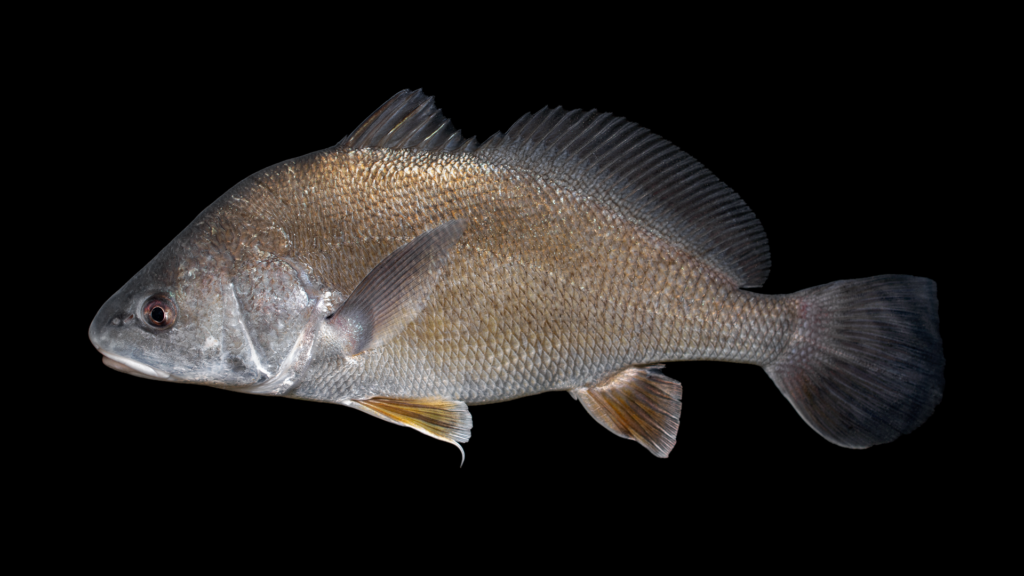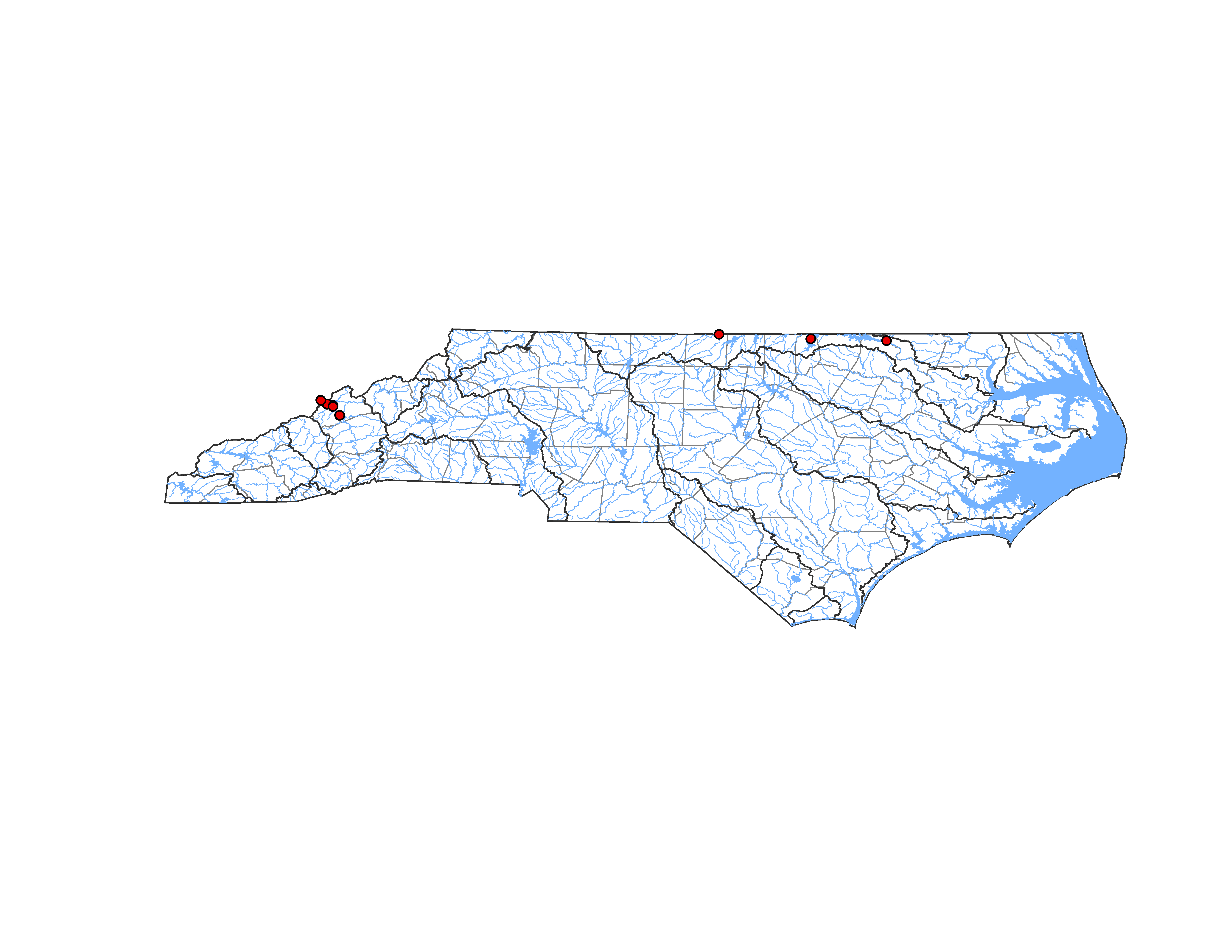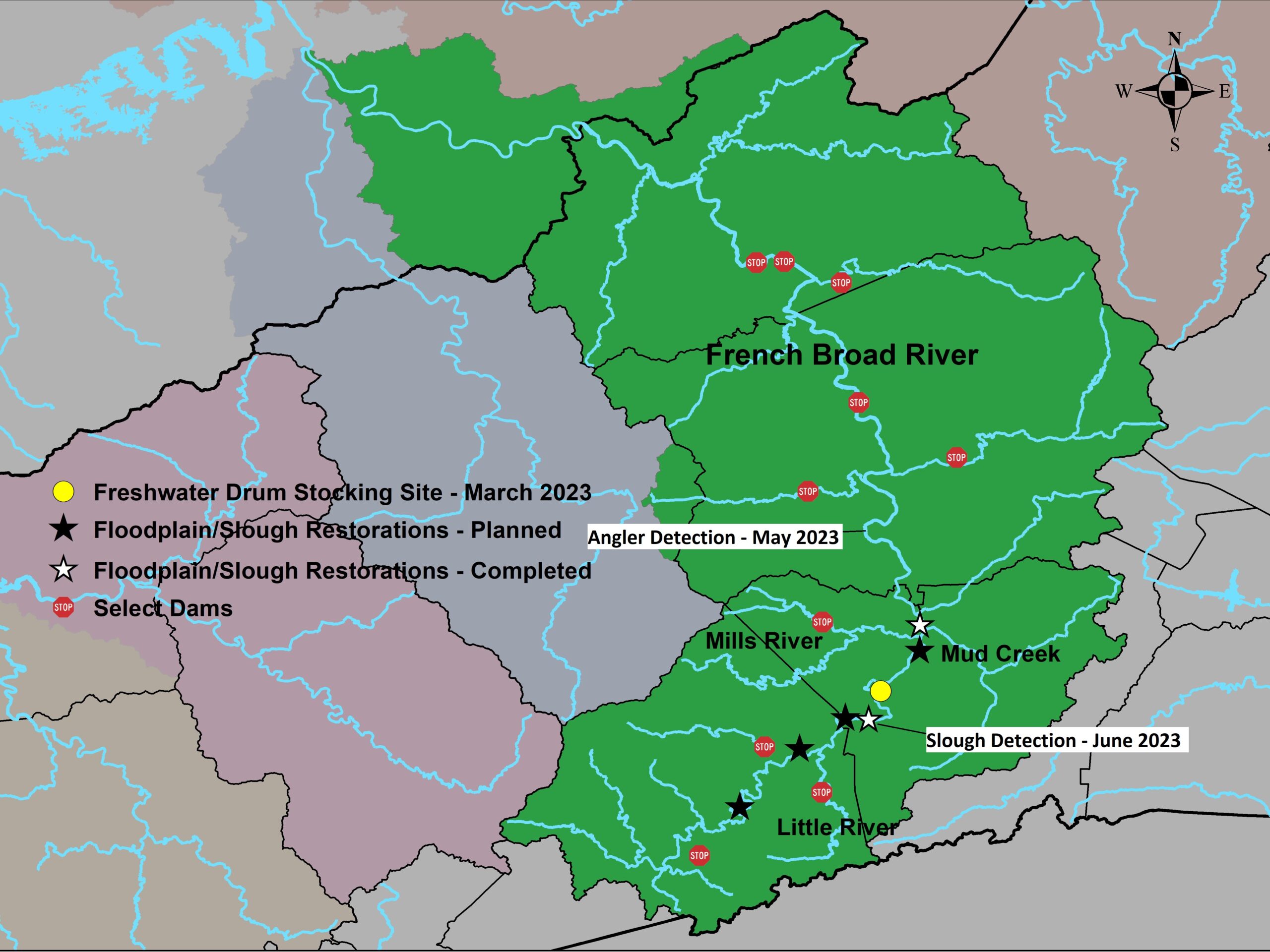
In North Carolina, the Freshwater Drum, Aplodinotus grunniens Rafinesque, 1819 (Figure 1), is indigenous to the western Mountain river basins where until recently, had been known from only a handful of records from the lower French Broad River near the Tennessee state line, Big Laurel Creek, and Spring Creek in Madison County below Redmon Dam (Tracy et al. 2020; Tracy et al in press; Map 1).

The first documented occurrence of its in the state was in 1963 (Richardson et al. 1963). Prior to the construction of dams and impoundments on many of our mainstem western flowing rivers, there were also anecdotal reports of its occurrence in the Hiwassee and Little Tennessee River basins.
The situation is different in the northeast part of the state, where Freshwater Drum was illegally introduced into John H. Kerr Reservoir (Roanoke basin) sometime between the 1980s or 1990s. There are also anecdotal reports of Freshwater Drum from Lake Gaston and Roanoke Rapids Lake and in March 2017 and April 2019 adult specimens were collected within the Roanoke Rapids Dam bypass reach. More occurrences in the mainstem of the Roanoke River downstream from Roanoke Rapids Dam are expected into the future. In 2020 Freshwater Drum had expanded its range up into the Dan River at Milton in Caswell County. Where indigenous, i.e., in the French Broad River basin, Freshwater Dum is classified as a Special Concern species.
The exciting news is that Freshwater Drum is being re-introduced back into its native range in the upper French Broad River basin in North Carolina through the efforts of staff from the North Carolina Wildlife Resources Commission (NCWRC), Tennessee Wildlife Resources Agency (TWRA), and U.S. Fish & Wildlife Service. In early Spring 2023, 109 fish were translocated from the French Broad River and Nolichucky River sections of Douglas Reservoir in Tennessee to the upper French Broad River upstream of Asheville near Etowah, Henderson County (Map 2).

The good news is that they seem to be adapting well to their new reach because an angler caught one near the Asheville airport in May 2023 (approximately 12 miles downstream from their release site). In addition, NCWRC staff detected one in June 2023 with their stationary Passive Integrated Transponder antenna in the Pleasant Grove slough which is about four river miles upstream from where they were originally released three months prior (Map 2).
NCWRC staff plan on further re-introductions of Freshwater Drum into the upper French Broad River in 2024 and to continue monitoring of a hopefully permanent, reproducing population in this part of the river basin.
For more information on this re-introduction project which originally appeared in the Wildlife Diversity Program Quarterly Report for January-March 2023 (https://www.ncwildlife.org/Conserving/Programs/Wildlife-Diversity-Program/WDP-Quarterly-Reports#71482512-2023-quarterly-reports), please see the attached pdf file.
References
Richardson, F.R., J.B. Messer, and H. M. Ratledge. 1963. Survey and classification of the French Broad River and tributaries, North Carolina. Final Report, Federal Aid in Fish Restoration, Job I–I, Project F–14–R. North Carolina Wildlife Resources Commission. Raleigh, NC.
Tracy, B.H., F.C. Rohde, and G.M. Hogue. 2020. An annotated atlas of the freshwater fishes of North Carolina. Southeastern Fishes Council Proceeding. No. 60. Volume 1. 198pp.
Tracy, B.H., F.C. Rohde, S.A. Smith, J.L. Bissette, and G.M. Hogue. (in press). Guide to North Carolina’s freshwater fishes. University of North Carolina Press, Chapel Hill, NC.